NSSA Elections 2010
Welcome to the 2010 NSSA Executive Committee Elections. This page lists some information on all the candidates running for office. The voting is done online and each current NSSA member will receive an email with a unique link to the voting site by December 15, 2010.
Vice President
Julie Borchers – NIST
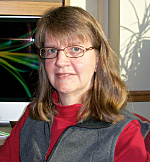 Statement: Neutron scattering has long been recognized as a powerful probe of the structure and dynamics of materials. As a staff member of a major neutron facility, I continue to be impressed by the creative applications of this resource by our users and by the breadth of scientific fields that they represent. Though the needs and interests of the neutron scattering community in North America are wide and varied, the resources available for advancements in instrumentation and neutron source development are limited. The NSSA has been very effective in its role of bringing together scientists and engineers with interests in neutron-based techniques in order to identify their priorities and needs. In addition, the ACNS meeting has proven to be an excellent forum for stimulating new research directions, sharing progress in instrumentation development, and promoting the use of neutron scattering across scientific disciplines. Since my tenure as NSSA secretary ten years ago, the NSSA has grown significantly both in membership and in the scope and extent of its activities. I thus welcome the opportunity to serve again in a leadership role on the executive committee of the NSSA as vice president, and I am eager to help develop creative, new ways for the NSSA to fulfill its essential mission.
Statement: Neutron scattering has long been recognized as a powerful probe of the structure and dynamics of materials. As a staff member of a major neutron facility, I continue to be impressed by the creative applications of this resource by our users and by the breadth of scientific fields that they represent. Though the needs and interests of the neutron scattering community in North America are wide and varied, the resources available for advancements in instrumentation and neutron source development are limited. The NSSA has been very effective in its role of bringing together scientists and engineers with interests in neutron-based techniques in order to identify their priorities and needs. In addition, the ACNS meeting has proven to be an excellent forum for stimulating new research directions, sharing progress in instrumentation development, and promoting the use of neutron scattering across scientific disciplines. Since my tenure as NSSA secretary ten years ago, the NSSA has grown significantly both in membership and in the scope and extent of its activities. I thus welcome the opportunity to serve again in a leadership role on the executive committee of the NSSA as vice president, and I am eager to help develop creative, new ways for the NSSA to fulfill its essential mission.
Brent Fultz – Caltech
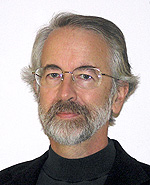 Statement: The major activity of the NSSA Vice President is to work with the conference organizers and professional organizations (especially the Materials Research Society) on the American Conference on Neutron Scattering. I feel ready for this responsibility, having served as an organizer of numerous workshops and symposia, and having worked to secure funding and help for them. An ACNS conference is a special meeting that blends topics over a broad range from facilities to all types of science that centers on neutrons. A challenge is prioritizing the importance of the work in these disparate topics, but the success of previous meetings show that this can be done, and we appreciate this diversity. As individuals, we see how neutron scattering offers opportunities in our own fields of science. The NSSA can help us tell the compelling story of neutron scattering research to the public and scientists in other fields. I will try to expand the membership of the NSSA and encourage new groups of scientists to join us in neutron scattering research. Although this brings more competition to our work, more users are needed to ensure the health of the field of neutron scattering and its facilities.
Statement: The major activity of the NSSA Vice President is to work with the conference organizers and professional organizations (especially the Materials Research Society) on the American Conference on Neutron Scattering. I feel ready for this responsibility, having served as an organizer of numerous workshops and symposia, and having worked to secure funding and help for them. An ACNS conference is a special meeting that blends topics over a broad range from facilities to all types of science that centers on neutrons. A challenge is prioritizing the importance of the work in these disparate topics, but the success of previous meetings show that this can be done, and we appreciate this diversity. As individuals, we see how neutron scattering offers opportunities in our own fields of science. The NSSA can help us tell the compelling story of neutron scattering research to the public and scientists in other fields. I will try to expand the membership of the NSSA and encourage new groups of scientists to join us in neutron scattering research. Although this brings more competition to our work, more users are needed to ensure the health of the field of neutron scattering and its facilities.
At our established neutron facilities, we cannot lose sight of the need for a balanced portfolio of neutron sources, instruments, and user support. Two concerns would drive my actions in the NSSA. First, I see a real need for more working beamlines in North America. Second, I would like to see more science come out of the work done with today’s instruments. Sample environments, software and user support offer efficiencies here. Funding is the challenge behind these concerns, of course. The NSSA needs to help build our community, make our voices heard, and call for the national need for neutrons.
Secretary
Ronald Jones – NIST
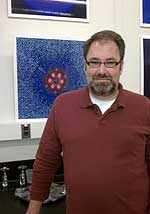 Statement: As a user of neutrons for over 15 years, with significant contributions to characterization methods of polymer thin films using small angle neutron scattering and neutron reflectivity, I am excited by the potential opportunity to serve as Secretary for the NSSA. As the only organization that bridges the users of neutron sources across North America, the importance of the NSSA is clear. If elected, I will strive to forward their mission to engage and continue to build that important and thriving user community.
Statement: As a user of neutrons for over 15 years, with significant contributions to characterization methods of polymer thin films using small angle neutron scattering and neutron reflectivity, I am excited by the potential opportunity to serve as Secretary for the NSSA. As the only organization that bridges the users of neutron sources across North America, the importance of the NSSA is clear. If elected, I will strive to forward their mission to engage and continue to build that important and thriving user community.
My research has focused on advancing technologies for manufacturing of nanoscale and nanostructured materials, including more than 75 publications in photolithography, nanoimprint, nanoporous low-k dielectrics, and directed self-assembly. As a staff member in the NIST Polymers Division, I have served as a leader of a project tasked to develop scattering solutions for microelectronics fabrication. This work has led to the inclusion of our techniques on the International Technology Roadmap for Semiconductors Roadmap, and development of scattering instrumentation by a wide range of vendors. My experience as a user of national user facilities, and especially neutron sources, includes extensive use of x-ray facilities at Argonne and Brookhaven National Laboratories, as well as neutron experiments at IPNS, LANSCE, and the NCNR. In addition, I continue to serve on a Proposal Review Panel at the Advanced Photon Source as well as the User Executive Committee of the Center for Nanoscale Materials Science (CNMS). The CNMS is a DOE sponsored center at Oak Ridge National Laboratory with a focus on facilitating neutron-based experiments through precise synthesis and characterization of materials. As a NIST staff member in the Polymers Division, I have collaborated heavily with NCNR staff as both a principal investigator as well as serving on review committees and providing lectures for the NCNR summer school.
As Director of the nSoft consortium, a collaboration of the NIST Polymers Division, the NCNR, and the University of Delaware Center for Neutron Science, I will seek to expand the size and impact of the neutron community. In addition to executing and supporting the vision of the NSSA President, if elected I hope to leverage this and other activities to help strengthen the user community, craft a coherent message from their needs, and support the development of facilities to meet those needs. As the expansion of the NCNR and the continued development of capabilities at the SNS proceeds, I look forward to the chance to work with you and serve as your representative in this critical time of development in neutron facilities in North America.
Chris Leighton – U Minnesota
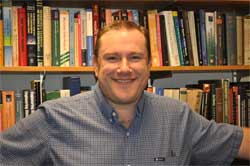 Statement: I believe the NSSA plays an important role in serving the needs of the US research community employing neutron scattering as a vital component of their scientific and engineering research. I propose to support this organization by serving as secretary of the NSSA Executive Committee, a position which I believe is pivotal to effective operation of the society. As an academic researcher working in a fundamentally inter-disciplinary area at the border between condensed matter physics and materials science I believe I am able to understand and represent the needs of a wide cross-section of the NSSA membership. As shown in the attached biographical sketch, I started my research career in condensed matter physics, eventually evolving into materials science, the main focus of my research being magnetism and magnetic materials. I first began using neutron scattering as a tool in my research as a post-doc, when I employed polarized neutron reflectometry as a probe of depth-resolved magnetism and magnetization reversal mechanisms in a specific area of interface magnetism known as exchange bias. As a faculty member in the Department of Chemical Engineering and Materials Science at the University of Minnesota I have become increasingly reliant on various methods of neutron scattering to make progress with the research problems my group is working on. These problems are quite varied and currently include magnetism in complex oxide materials, oxide films and heterostructures, spin transport in metals, highly spin-polarized ferromagnetism, and magnetic nanostructures fabricated by block-copolymer nanolithography. Given the breadth of this effort my group employs a significant number of neutron scattering techniques in the work, most notably small-angle neutron scattering, neutron diffraction, and polarized neutron reflectometry. We currently perform these experiments at a variety of US sources including NIST, LANSCE and the SNS. Given the interdisciplinary nature of this work, and the breadth and scope of my research interests, I hope that I am well positioned to represent the exceptionally broad US neutron research community.
Statement: I believe the NSSA plays an important role in serving the needs of the US research community employing neutron scattering as a vital component of their scientific and engineering research. I propose to support this organization by serving as secretary of the NSSA Executive Committee, a position which I believe is pivotal to effective operation of the society. As an academic researcher working in a fundamentally inter-disciplinary area at the border between condensed matter physics and materials science I believe I am able to understand and represent the needs of a wide cross-section of the NSSA membership. As shown in the attached biographical sketch, I started my research career in condensed matter physics, eventually evolving into materials science, the main focus of my research being magnetism and magnetic materials. I first began using neutron scattering as a tool in my research as a post-doc, when I employed polarized neutron reflectometry as a probe of depth-resolved magnetism and magnetization reversal mechanisms in a specific area of interface magnetism known as exchange bias. As a faculty member in the Department of Chemical Engineering and Materials Science at the University of Minnesota I have become increasingly reliant on various methods of neutron scattering to make progress with the research problems my group is working on. These problems are quite varied and currently include magnetism in complex oxide materials, oxide films and heterostructures, spin transport in metals, highly spin-polarized ferromagnetism, and magnetic nanostructures fabricated by block-copolymer nanolithography. Given the breadth of this effort my group employs a significant number of neutron scattering techniques in the work, most notably small-angle neutron scattering, neutron diffraction, and polarized neutron reflectometry. We currently perform these experiments at a variety of US sources including NIST, LANSCE and the SNS. Given the interdisciplinary nature of this work, and the breadth and scope of my research interests, I hope that I am well positioned to represent the exceptionally broad US neutron research community.
Treasurer
John Tranquada – Brookhaven National Laboratory
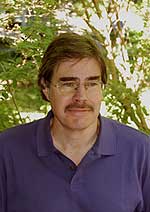 Statement: John Tranquada is a Senior Physicist and leader of the Neutron Scattering Group in the Department of Condensed Matter Physics and Materials Science at Brookhaven National Lab. After receiving his Ph.D. in Physics from the University of Washington in 1983 for work involving x-ray absorption spectroscopy, his introduction to neutron scattering came in 1987 when he joined the group at Brookhaven. His research over the last two decades has largely involved studies of cuprate superconductors, particularly the role of spin and charge stripes, and he has coauthored (with Shirane and Shapiro) one book on neutron scattering. He had experience supporting users when the HFBR was in operation, and has since acquired experience as a user at various neutron facilities in the U.S., Canada, Europe, and Japan. Tranquada has served on several advisory committees for the SNS, HFIR, and NCNR, and has been on numerous review committees and panels for all of the DOE neutron facilities.
Statement: John Tranquada is a Senior Physicist and leader of the Neutron Scattering Group in the Department of Condensed Matter Physics and Materials Science at Brookhaven National Lab. After receiving his Ph.D. in Physics from the University of Washington in 1983 for work involving x-ray absorption spectroscopy, his introduction to neutron scattering came in 1987 when he joined the group at Brookhaven. His research over the last two decades has largely involved studies of cuprate superconductors, particularly the role of spin and charge stripes, and he has coauthored (with Shirane and Shapiro) one book on neutron scattering. He had experience supporting users when the HFBR was in operation, and has since acquired experience as a user at various neutron facilities in the U.S., Canada, Europe, and Japan. Tranquada has served on several advisory committees for the SNS, HFIR, and NCNR, and has been on numerous review committees and panels for all of the DOE neutron facilities.
The NSSA plays a valuable role in promoting the benefits and capabilities of neutron scattering techniques, and in stimulating and educating potential users, especially by organizing biannual conferences. These activities remain important, as continued federal investment in neutron facilities and instrumentation requires justification through a diverse, productive, and growing user community. If elected, I will do my part to support NSSA activities.
